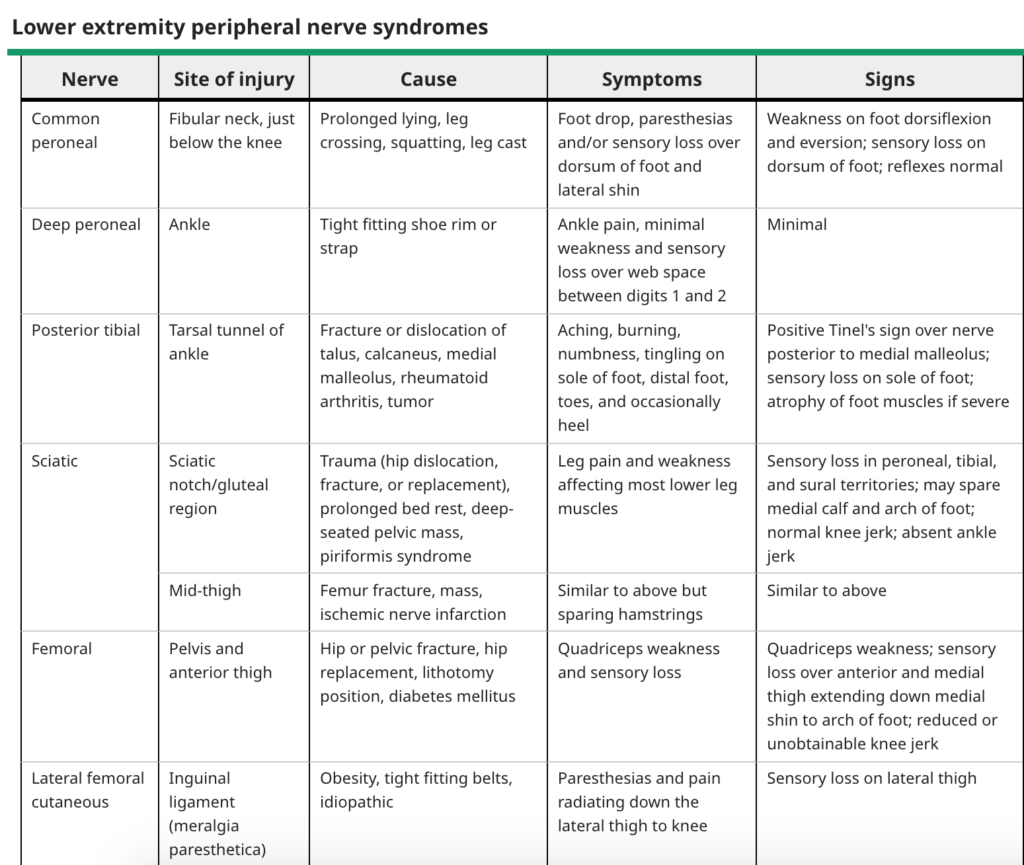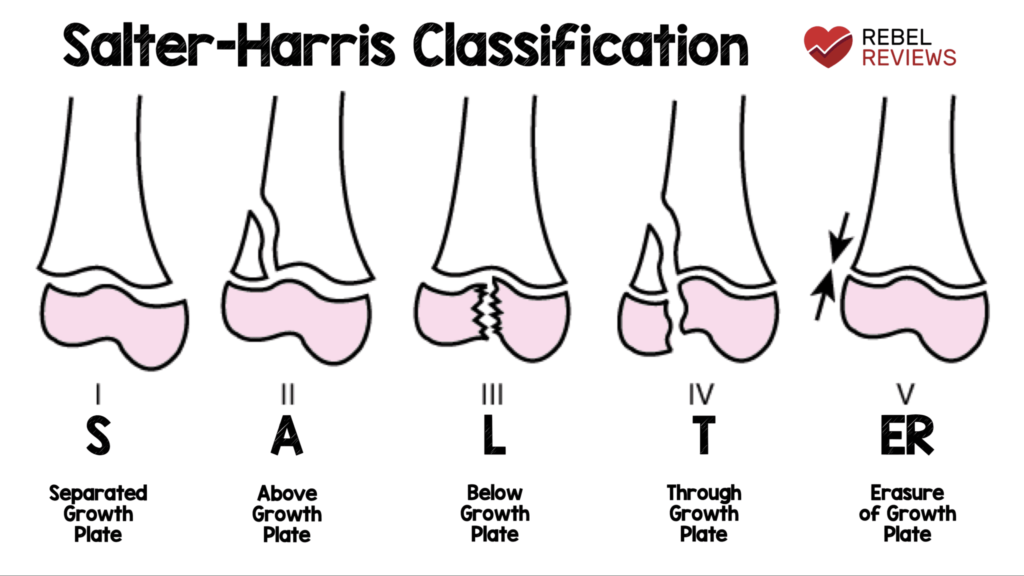Rhabdomyolysis
Causes: traumatic, non-traumatic exertional, non-traumatic non-exertional
Workup:
- Hyperkalemia
- hyperphosphatemia
- hypocalcemia
- CK 3-5x upper limit of normal
- UA: +blood (myoglobin), -RBC
Management: IVF 2.5 mL/kg/hr with UOP goal of 2-3 cc/kg/hr
Upper and Lower Extremity Nerve Palsies


Pediatric Ortho
- Always consider non-accidental trauma in children
- Occult fractures are more common in peds
- If in doubt, splint and follow-up with ortho
- Presence of fat pads can indicate underlying fracture
- Posterior is always pathologic.
- A thin anterior fat pad is normal, but a “sail sign” is pathologic
- Management of common fractures
- Monteggia fracture – urgent ortho consult for ORIF
- Seymour fracture – physeal fracture of distal phalanx with associated nailbed injury. High risk for soft tissue entrapment. Requires Hand consult for likely ORIF
- Tufts fracture w/ nailbed injury – antibiotics not required. Follow-up in 7-10 days with Hand
- Common avulsion fractures (e.g. ASIS, lesser troch, iliac crest apophysis avulsion) should be NWB on affected extremity and f/u with ortho.
- Torus fracture – splint with short arm cock-up splint
- Greenstick fracture – unstable, requires splinting
- Bowing deformity – treat it like a fracture and splint it
- Mid and proximal humerus fracture – sling and swathe OR coaptation splint, sling, ortho f/u

Drug Rashes
- Common drug-induced rashes
- Exanthematous drug eruption (EDE) – maculopapular
- Urticaria w/o anaphylaxis
- Vancomycin flushing syndrome (“Red man”)
- Uncommon and severe drug-induced rashes
- Fixed drug eruptions
- angioedema
- acute generalized exanthematous pustulosis
- DRESS
- SJS and TEN
- DRESS can occur up to 8 weeks from drug exposure
- EDE (T-cell related) vs Urticaria (histamine) – draw an image on patient’s skin. If it appears red and/or raised after 10 min, it is urticaria
- Antihistamines: First gen (sedating): diphenhydramine, hydroxyzine; Second gen (less sedating): cetirizine, loratadine
- Topical corticosteroids – medium to high potency preferred for short course
![Room9er ["Room Niner"]:](https://room9er.com/wp-content/uploads/2020/03/cropped-Screen-Shot-2020-03-08-at-3.16.16-PM.png)